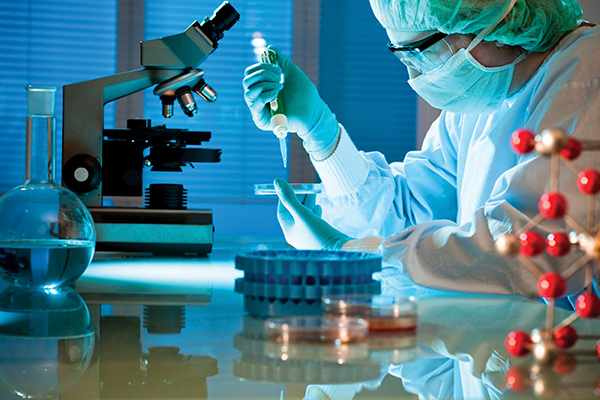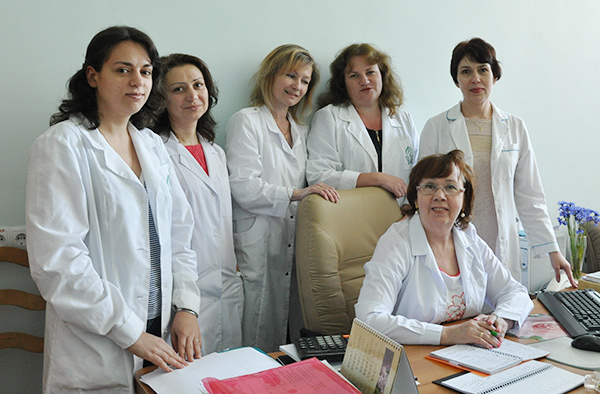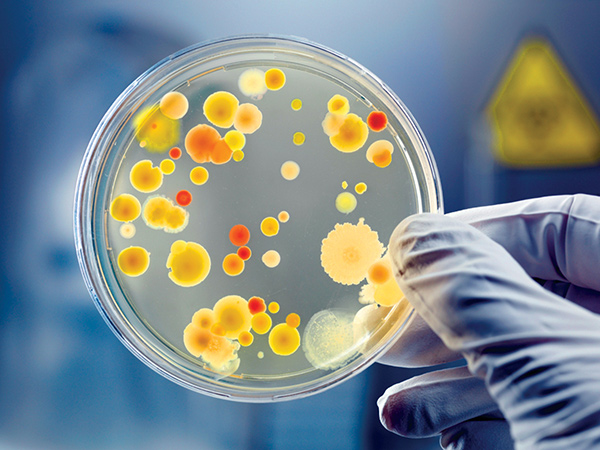
As I’ve learnt from the Internet, the International DNA Day is celebrated in our modern times. However, before going to the Academy of Sciences’ Institute of Genetics and Cytology to hear from first hand about our DNA possibilities, I’ve made some searches.
DNA epoch: some historical facts
The International DNA Day is celebrated on April 25th. On this day, scientists in the field of molecular biology made discoveries many times. In 1953, an article was published in American Nature magazine with results of the DNA structure studies — authored by James Watson and Francis Crick (who later became Nobel Prize holders). However, some researchers are convinced that the DNA was discovered by little known Rosalind Franklin; the lady made photos of DNA strings with an X-ray accuracy. Friedrich Miescher is also among those viewed as the DNA ‘authors’. The doctor learnt of the DNA around two centuries ago. While studying animals’ leucocytes, he discovered a strange compound under a microscope; it was present in cell nucleus. The compound bottomed as white flakes if a special solution was added. Friedrich called his find a ‘nuclein’ — deriving from the Latin word of ‘nucleus’. At that time, little was known of a nucleus structure but people guessed that its function was to store hereditary characters. However, scientists could hardly believe that protein fibres were able to store all information on a live organism. Only about twenty five years later, scientists fully agreed with that.
Another important step in the DNA studies was an official announcement that a human genome’s decoding was close to completion. The event also took place on April 25th. However, it was then also stated that some DNA segments were still under investigation.
The discoveries continued to be made but, according to official scientists, those were authored by an amateur — or a bio-hacker. It’s hardly possible to argue this as high technologies are now developing with a great speed and their accessibility enables anyone ‘to play God’. A couple of discoveries have already been registered: an amateur scientist — America’s surf-rider Josh — made a device at home able to test the DNA for genetic diseases. Another ‘discoverer’ was Richard Handl: he wrote a detailed instruction on how to create a nuclear reaction at home. Happily, he failed to practically realise his idea: Sweden’s law-obedient person made a denunciation upon himself to police.
Internet users place home video with experiments of producing DNA from fruits and vegetables, using materials on hand: salt, shampoo, spirit and water. It’s become truly simple to demonstrate a child what DNA’s white threads of onion (as an example) look like. In addition, talks on a genetically modified person, with artificially produced healthy genes (much spoke of on TV) also attract attention. On hearing this, it’s hardly possible to decide: whether we should get pleased and inspired or frightened. It seems that a singly move is needed to create an ideal world where eternally young and beautiful people live.
Not long ago, Andy and Lana Wachowski’s Jupiter Ascending has been screened to wide public, proposing a new version of events which might take place in the future. The plot pursuits the best traditions of an American blockbuster: owners of intergalactic worlds fight for the right to own the blue planet of Earth. One of the scenes features the main character (an owner of an alien civilisation) plunging into a ‘live’ water — becoming again young and beautiful. It later came out that a chemical composition of that miraculous liquid was from human lives of people of the Earth. It’s a truly strange and slightly frightening phantasmagoria on the natural selection in the future.
In the past millennia, there were also attempt to create a perfect human organism. In the times of Antiquity, weak babies were killed, while those — successfully passing awful tests such as bathing in cold water — were not deprived of their right to live. Religion was then born which prohibited baby killing, stating that all humans are equal in the God’s eyes. However, care of coming generations continued worrying scientists’ brains. As a result, some time later, the world got acquainted with Charles Darwin’s theory of natural selection. Articles were then published on the supremacy of some humans over others — determined under certain subjective features. In the course of time, that outlook received its name — eugenics: a study on selection of the humankind investigating human genomes and ways to improve their hereditary features. The notion — introduced by Darwin’s cousin Francis Galton — is most often associated with Nazi Germany. Its so-called negative eugenics inspired state bodies to call upon the society to keep to the rules of ‘social hygiene’ — taking measures to eliminate any possible risk of ‘non-qualitative’ generations born. In the pre-WWII USA, around 50,000 citizens were forcibly sterilised and over 350,000 underwent the procedure in Nazi Germany. It might seem that the dreadful results of WWII should have affect the reputations of eugenics but some events — aimed at ‘governing birthrate’ are still topical in Singapore, China, India and Japan.
In the modern science, many problems of eugenics — especially fight against hereditary diseases — are solved with help of genetics.

Maria Mikhailova, the Head of the Laboratory of Animal Genetics, with the employees of the Laboratory
What our life looks like
If our life is a residue emerged as a result of a chemical reaction, then what is its supreme sense? How do genes — which cannot be seen under a microscope — correlate with each other and how people’s special feelings can be explained? How was the discovered gene of ‘happiness’ studied if the notion of happiness is vague? Maria Mikhailova, a Candidate of Biological Sciences, an Associate Professor and the Head of the Belarusian National Academy of Sciences’ Institute of Genetics and Cytology’s Laboratory of Animal Genetics, helps us clear up some of these tricky issues.
Ms. Mikhailova has devoted over forty years to studies of the flora — occupying the posts of a research officer and the Deputy Director for Scientific and Innovative Work. She co-ordinated developments emerged as a result of scientific projects, for their further use in the national economy. Ms. Mikhailova’s many years of experience in the sphere of genetics help distinguish the truth and fiction on the DNA which can be easily found on the Internet. She tells us of the peculiarities of a human organism, of the problems which animals suffer from and what results DNA tests would demonstrate.
Ms. Mikhailova, some time ago, fans of Hollywood star Angelina Jolie argued in discussing her decision to ablate a healthy breast. The beauty made a test which indicated that she had a great possibility of breast cancer. What other information can a DNA test produce?
A person is most often worried with a disposition to hereditary diseases — as it happened with the above mentioned celebrity. This is especially topical for those with relatives suffering from diabetes, insufficient work of the muscle system, heart problems or breast cancer. Truly, modern methods make it possible to detect gene mutations able to result in breast cancer. It’s also possible to detect whether a person has a disposition to osteoporosis, bronchial asthma, venous thrombosis, rheumatoid arthritis, pregnancy problems, the sudden death syndrome or other diseases.
I’ve heard much of the latter recently. Is it a result of our speedy lifestyle and overburden of our organisms?
It’s also a result of the failed metabolism. We often read in printed media that an athlete dies during training or competition. However, it’s possible to learn of a future Olympic champion’s genotype in their childhood — to get know that this person should not go in for sports. A test helps detect a child’s disposition to certain diseases: for example, they might not be recommended to lift heavy weighs but are likely to achieve good results in athletics. Actually, all our national teams have passed such tests and some sportsmen — whose competitions are held at great heights against the sea level — are specially trained. Accordingly, athletes might be prepared in the lowlands to arrive to their competition venue just on the eve of the major event. A human genotype also makes it possible to distinguish what doses of a medicine can be accepted by an organism. It sometimes happens that prescribed norms do not meet individual needs of a person: some might need a double dose while others can accept a half of the prescribed volume. This is the so-called ‘full scheme of a genome as a genetic picture’. All these researches are conducted at the Centre of Genome Studies’ laboratory of human genetics — headed by Irma Mosse.
Can this knowledge influence development of certain diseases and avoid their emerging?
Tests are conducted with the aim of preventing diseases. People might think more of what they eat and drink, also changing their lifestyle or climate. On the contrary, such tests can demonstrate that people need nothing to change. There is a non-accidental saying: be of use and carry your business on in the country where you were born. Some detected pathologies — like pregnancy miscarriage which is connected with certain gene mutations — can help doctors correct treatment. Our genetics laboratory registers women who’ve solved this problem.
How is the test procedure conducted?
The most painless method is to collect bio-material to further receive a DNA. To do this, a person needs to scrape his cheek (from the inside) with a special sterile stick. However, a blood drop can also produce concrete results.
Who else in Belarus is engaged into studies of the kind?
Since human genetics is an interesting and promising science, many institutions work in this sphere. However, each of them has their own special focuses. Specialised laboratories detect AIDS, papilloma virus or syphilis. In turn, other establishments focus on cancer-specific markers. Forensic investigation specialists study the issues of relationship while the Mother and Child Republican Scientific-Practical Centre oversees problems of children’s and mothers’ genetics. Our Institute runs its own Republican Centre of Genome Technologies which has obtained accreditation for the activity I’m speaking about.
Have Belarusian scientists made any discoveries recently?
It’s not correct to speak of discoveries in a certain country. Speaking of global achievements, these are the result of work of people of different specialties. We have many scientific-research projects run jointly with foreign states. Two of them have been recently completed: they were realised jointly with Venezuela and were focused on bio-security of the environment and flora and fauna genetics. We also realise many traditional projects with EurAsEC states; scientists of Belarus, Russia and Kazakhstan rely on them in studying flora genetics. In addition, the Belarusian Republican Fund of Fundamental Researches has been established at the Academy of Sciences to finance searching themes in different directions, on the tender basis. Scientists from different countries work over these developments — including from Belarus, Turkey, Azerbaijan and Lithuania.
We’ve cleared out some facts about people but what genetic problems are common for animals?
Most issues upon which our laboratory works are related to genetics of agricultural and wild animals. Primarily, an animal must be healthy and our task is to detect its hereditary diseases in time — excluding ill animals from the selection process to avoid mutations. As regards wild animals, we are now realising an international project jointly with the Polish Academy of Sciences’ Institute of Mammal Study with an aim of ensuring bio-diversity of European aurochs. As you know, this animal is our country’s brand. In the 17th-18th century, aurochs’ habitat was vast but, as a result of wars and urbanisation, their population has cut to just twelve animals worldwide. They key task then was to preserve aurochs as a species. It was necessary also to improve their health. At the moment, over 5,000 animals are already registered, with around 1,363 in Belarus. Actually, our country is the first worldwide regarding keeping of aurochs who live in wild nature. Among our primary issues is to distinguish genetic differences of Belarusian and Polish aurochs and to create conditions to ensure their population lives healthy and rich life.
Every living creature has its own DNA, with a great number of genes. With this in mind, isn’t it harmful to eat others’ genomes?
No, it’s not harmful. Each living organism has its own types of nutrition. Plants ‘drink’ water while people ‘eat alien genomes’; this is a genome of a single organism. This is the structure of our nature. A person is a plant and meat eating creature and we need to consume animal proteins — whatever vegetarians might say.

Meanwhile, vegetarians can explain their decision not to eat meat: aggressive energy of a killed animal passes to people when they eat its meat. Probably, they speak of animal genes which we consume as a result…
Believe me, we have enough ferments to digest food so well that no DNA is preserved. However, this food preserves many nutrient substances.
As I’ve read a grapefruit can restore a DNA’s broken structure. Does this mean that it can be destroyed?
Yes, it can — under the influence of negative factors such as long-lasting stress, bad food or ecology. The process of DNA restoration is possible; it’s called reparation.
I’ve also heard that a DNA of a banana and a person are 50 percent identical. Taking into consideration that they contain genomes, we are semi-bananas…
We are not bananas! This information is clear without any percent ratio figures.
Meanwhile, we have 99 percent of common genes with chimpanzees. One percent of difference is a large figure?
Are we much similar in appearance? I think, no. With this in mind, such a view has no grounds to assert that a person originated from a monkey. We may have another example: a genius and a fool can differ little in appearance. How can we detect differences then? If this were an easy task, then our children would have been geniuses.
Can a person change their genes through praying or spiritual lifestyle?
Sadly, no. We preserve genes given us at birth and these genes will later be passed to further generations.
It’s been proven that water can change its structure under the influence of sound. Why shouldn’t we then influence our genes?
Each of us has their own lifestyle and education. A personality might change but genes cannot. We may take twins as an example. They live in different surroundings but they can fall ill simultaneously. Moreover, some genes might fail to work. There is a saying that nature rests on children but this does not mean that a child lacks any talent. Probably, some genes are `sleeping`. A child might have failed to be educated and brought up in the way to inspire ‘nature’ to distinguish itself.
What can you say of the 5 HTTLPR gene responsible for optimism? This seems an abstract notion…
We all experience emotions differently. There are sanguine, choleric or melancholic persons. Some might be unsatisfied with the whole world as a source of happiness while others would be pleased with a loaf of bread. This has no relation to genes.
P.S. It’s truly interesting whether the first Biblical couple — Adam and Eva — had their own DNAs. They might be formed after their original sin — for people to learn deciphering and controlling genes and return to immortality. These hypothetical issues are studied by behavioural genetics — a young science combining genetics and psychology. It is in its infantry in the world but we hope it’d create many discoveries for the humankind. As it’s become clear, genes cannot be simply destroyed…
By Alisa Krasovskaya











